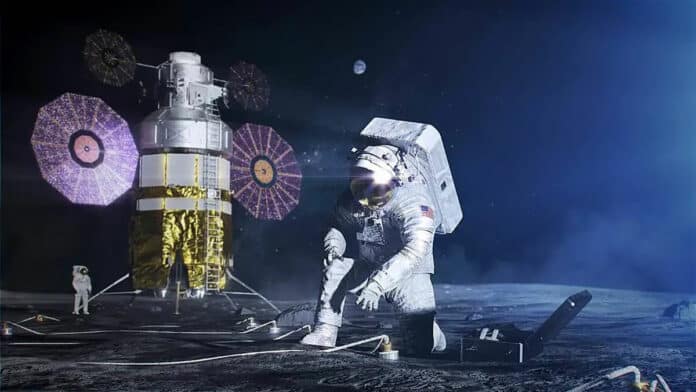NASA and Japan’s space agency have forged a collaborative effort to explore the lunar surface together. Recently, both agencies unveiled their mutual aspiration for a Japanese national to become the first non-American astronaut to set foot on the Moon in an upcoming Artemis mission, contingent upon achieving significant milestones.
On April 9, NASA Administrator Bill Nelson and Japan’s Minister of Education, Culture, Sports, Science, and Technology (MEXT), Masahito Moriyama, inked an agreement to jointly pursue long-term human exploration of the Moon through Artemis missions. Japan will take charge of designing, developing, and operating a pressurized rover for both crewed and uncrewed lunar exploration endeavors. In return, NASA has committed to facilitating the launch and delivery of the rover to the Moon and providing two opportunities for Japanese astronauts to embark on lunar expeditions.
This historic agreement, signed at NASA Headquarters in Washington, reflects a shared vision of advancing space exploration in unity. According to Nelson, this collaboration marks a significant departure from past endeavors, as it symbolizes a shift towards inclusive exploration beyond national boundaries. The envisaged pressurized lunar rover will enable astronauts to traverse longer distances and conduct extended scientific investigations across diverse lunar terrains.
Japan’s proposed rover, designed to accommodate up to two astronauts for month-long missions, will serve as a mobile habitat and laboratory, significantly enhancing the capabilities of future lunar missions. NASA plans to deploy this rover on Artemis VII and subsequent missions over the next decade.
Moriyama expressed enthusiasm for the strengthened partnership with NASA, emphasizing their joint commitment to advancing lunar exploration. Beyond the Artemis mission, NASA and Japan have a history of collaboration in space exploration endeavors. For instance, JAXA collaborated with NASA on the XRISM mission and is contributing to NASA’s Dragonfly mission and Nancy Grace Roman Space Telescope.
Looking ahead, NASA’s ambitious plans include establishing the Gateway, the first space station orbiting the Moon, for which Japan will provide crucial environmental control and life support systems, along with cargo transportation services. This collaborative venture underscores the shared commitment of NASA and Japan to push the boundaries of space exploration and pave the way for future discoveries.



